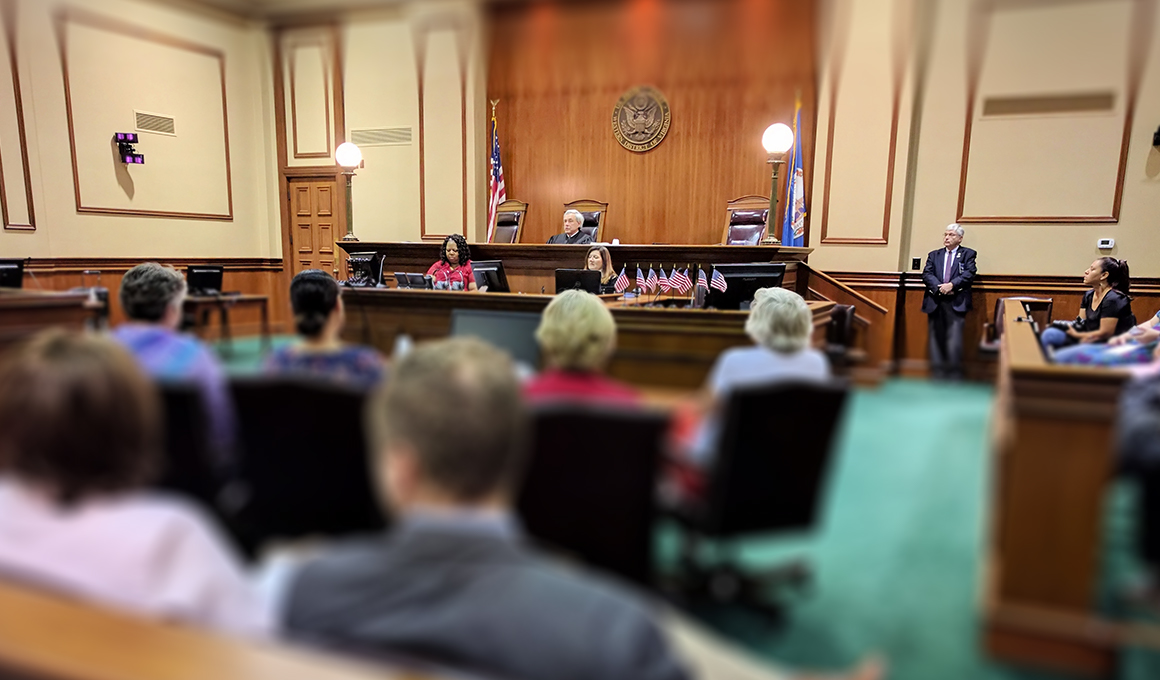Powerful trial presentations combine visuals, data, and strong arguments.
Powerful trial presentations combine visuals, data, and strong arguments.
Blog Article
Just How Test Presentations Enhance Your Disagreement and Convince Jurors
Trial presentations act as a critical mechanism for enhancing lawful debates and persuading jurors. By integrating aesthetic help, narrative frameworks, and emotional engagement, attorneys can develop an engaging situation that resonates on multiple degrees. The strategic usage of visuals not just clears up complex information but additionally catches jurors' attention better than words alone. The art of storytelling plays a just as important function in transforming valid evidence right into a compelling story, shaping jurors' perceptions. Recognizing these aspects can dramatically affect trial end results, raising the inquiry of exactly how each part contributes to this intricate dynamic.

Importance of Aesthetic Aids
Visual help play a critical function in enhancing the performance of trial discussions, as they can dramatically raise audience engagement and retention of info. In the context of a trial, where jurors are entrusted with processing facility information, aesthetic aids offer to simplify and make clear essential factors. Charts, charts, and images can share data and ideas that may or else bewilder or puzzle jurors, permitting a much more straightforward understanding of the proof presented.
In addition, visual aids assist in maintaining juror interest throughout the process. By breaking the dullness of spoken testimony, these devices can stress important arguments, making them a lot more memorable. Efficient aesthetic help can also stimulate psychological reactions, which can be crucial in persuading jurors to line up with the speaker's story.

Crafting Compelling Narratives
An engaging narrative is necessary in test presentations, as it works as the foundation of effective persuasion. It enables lawyers to weave with each other facts, evidence, and psychological components into a meaningful tale that reverberates with jurors. This narrative structure makes it possible for jurors to understand the complexities of the situation while leading them through the attorney's disagreement.
To craft a compelling narrative, attorneys ought to focus on clarity and coherence. Additionally, the usage of dazzling summaries can develop psychological pictures that assist jurors visualize the events, making the narrative extra remarkable.
Moreover, incorporating vital motifs throughout the discussion strengthens the core message and aids in retention - trial presentations. The narrative needs to not just communicate details yet additionally stimulate a sense of justice, highlighting the stakes entailed. Inevitably, a sound narrative fosters a link in between the jurors and the situation, positioning the lawyer's disagreement as both qualified and engaging, consequently enhancing the likelihood of a desirable decision

Engaging the Court Emotionally
Reliable jury interaction pivots on the attorney's capability to attach with jurors on an emotional level. This link can significantly affect jurors' assumptions and their ultimate decision-making.
Visual help, such as pictures or videos, can even more enhance psychological involvement, providing jurors more helpful hints with vibrant depictions of the case's human elements. Crafting a narrative that highlights the battles and accomplishments of the people involved guarantees that jurors see past the lawful debates and acknowledge the human effects of their choices.
Moreover, tone and body language play a vital duty in sharing feeling. A lawyer's enthusiastic delivery can resonate with jurors, reinforcing their emotional investment in the event. It's necessary to stabilize psychological allures with valid proof, making certain that jurors really feel urged to act while continuing to be based in the fact. Inevitably, a psychologically involved court is most likely to be persuaded, making psychological link an essential part of efficient trial presentations.
Structuring Your Presentation

The body of the discussion should be practically segmented right into crucial points, each sustained by compelling proof. It is helpful to use narration techniques to weave facts right into a narrative that jurors can easily comply with. Visual help, such as graphes and video clips, can boost comprehension and engagement, assisting to highlight crucial pieces of evidence.
Real-World Case Research Studies
Analyzing real-world instance research studies gives vital understandings into the art of test discussions and persuasion. The landmark instance of "O.J. Simpson v. The People of California" highlights how visual help and engaging narratives can persuade court assumptions. The defense team successfully used a technique that integrated top-level expert statements with image source multimedia discussions, which astounded jurors and ultimately influenced their decision.
An additional remarkable instance is the "McDonald's Coffee Instance," where the complainant's lawyers made use of visuals photos of the injuries sustained by Stella Liebeck. trial presentations. This stark aesthetic proof played an essential role in conveying the severity of her burns, leading to a significant jury award. Such instances show that impactful test discussions commonly web link pivot on the reliable combination of visuals and storytelling to evoke emotional responses from jurors
In addition, the "Casey Anthony Test" highlighted the relevance of narrative comprehensibility and integrity. The prosecution's failing to establish a compelling timeline lessened their persuasive power, underscoring the necessity of a well-structured discussion. Examining these situations reveals that effective test presentations call for critical planning, emotional involvement, and the capability to resonate with jurors' worths and beliefs.
Conclusion
Test discussions considerably boost arguments and convince jurors through the calculated usage of visual aids, compelling narratives, and psychological engagement. A well-structured presentation equilibriums psychological appeals with accurate proof, ultimately resonating with jurors' worths.
Report this page